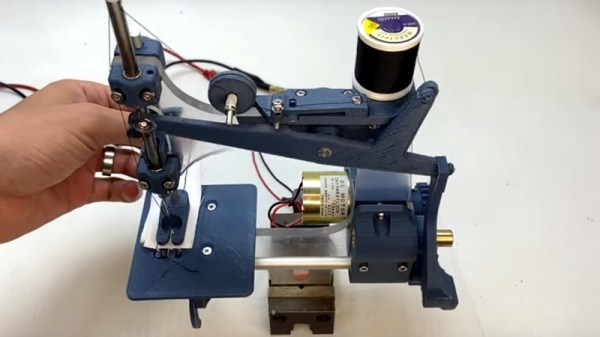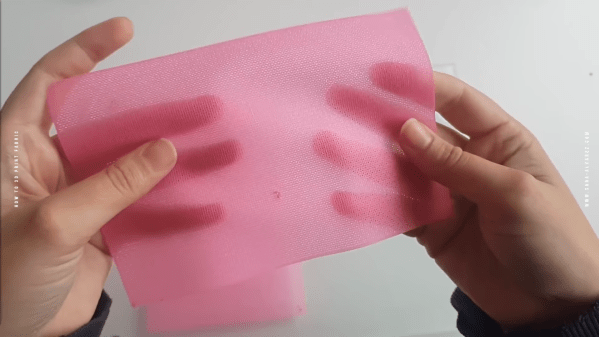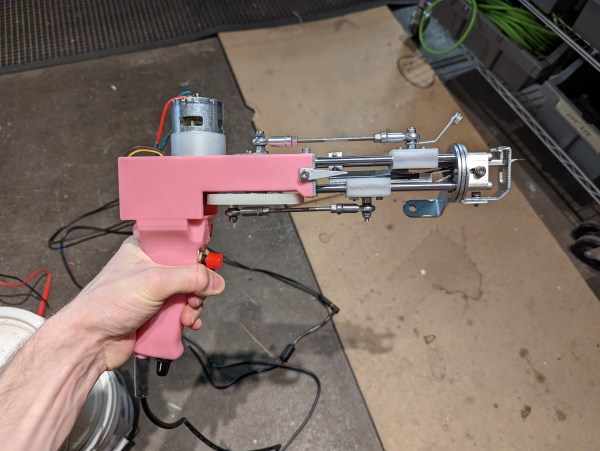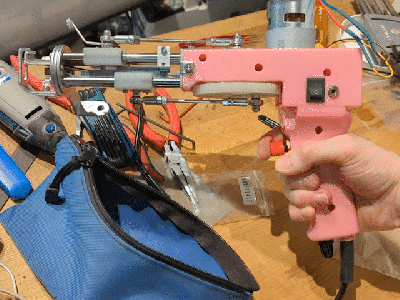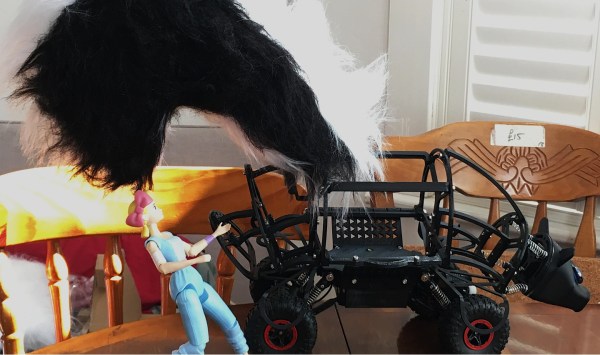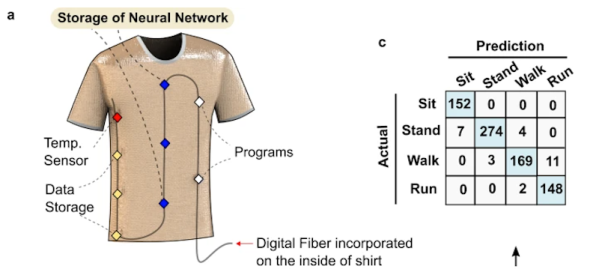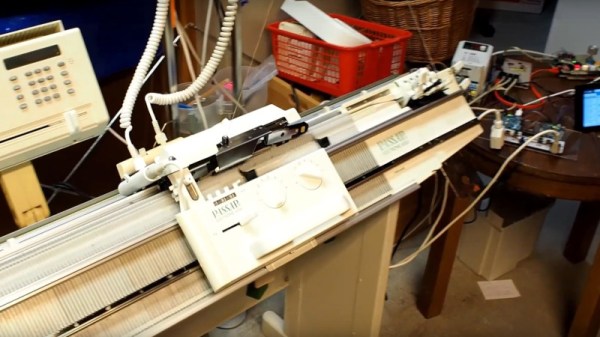Mechanizing the production of textiles was a major part of the industrial revolution, and with the convenience of many people are recreating the classic machines. A perfect example of this is [Fraens]’ 3D printed braiding machine, which was reverse engineered from old photos of the early machines.
The trick behind braiding is the mesmerizing path the six bobbins need to weave around each other while maintaining the correct tension on the strands. To achieve this, they slide along a path in a guide plate while being passed between a series of guide gears for each section of the track. [Fraens] cut the guide plate components and the base plate below it from acrylic and mounted them together with standoffs to allow space for the guide gears.
Each of the six bobbins contains multiple parts to maintain the correct tension. The strands are fed through a single guide ring, where the braid is formed, and through pair of traction gears. All the moving parts are driven by a single 24 V motor and can produce about 42 cm of a braided cord per minute, and you can even set up the machine to braid around an inner core.
This braiding machine is just one in a series of early industrial machines recreated by [Fraens] using 3D printing. The others include a sewing machine, and a power loom, and a generator.
Continue reading “3D Printed Braiding Machine Brings Back Some History”


